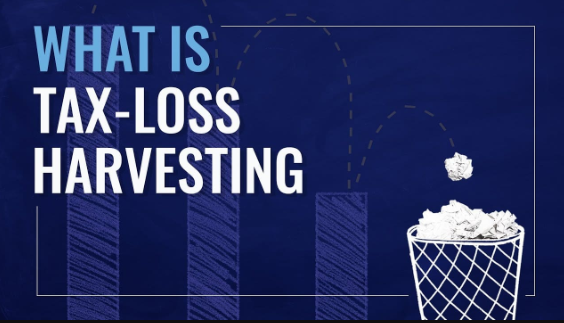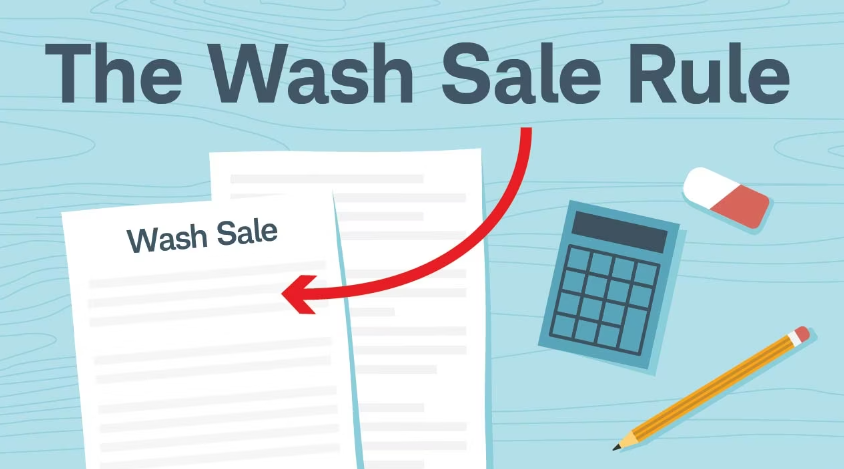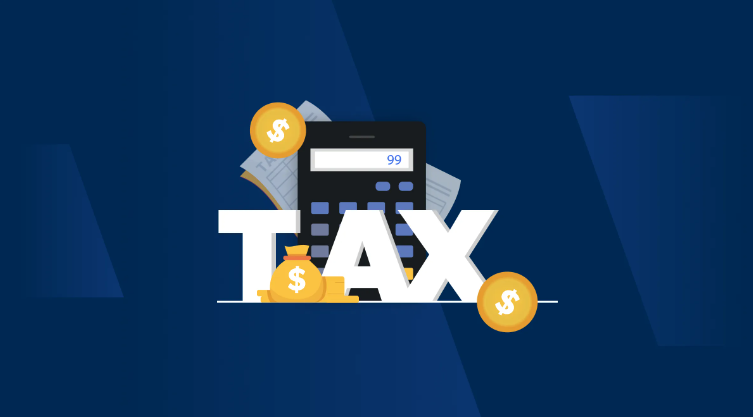This is too difficult for a mathematician. It takes a philosopher.
–Albert Einstein
One of the benefits I have of continuing to serve on boards of portfolio companies is that I get to talk to people who are a lot smarter than me.
At a recent dinner, one of the other board members stated that he believed that he could create his own index fund and conduct tax loss harvesting within that fund due to zero commission brokerages such as USAA.
I was intrigued. Tax optimization is going to be important to us now that we have FIREd so that we can maximize our cash flows.
If he was right, then, while potentially time-consuming (having to buy hundreds of stocks at the beginning of the year, sell some unknown number of stocks at the end of the year, and then rebuy them 30 days later…more on that in a bit…), it could also have the advantage of saving ETF or mutual fund expenses.
So, I decided to do a little thought experiment.
But, first, let’s provide a couple of important definitions.
What is Tax Loss Harvesting?

Tax loss harvesting is the practice of selling losers in your taxable accounts to offset income taxes, either from ordinary income (wages, short term capital gains) or from long-term capital gains.
Let’s say that you had a 24% marginal income tax rate, meaning that you were taxed 24% on the next dollar that you earned.
That dollar earned would generate 24 cents in income taxes.
Each dollar of capital loss would reduce your taxes by 24 cents.
Let’s do a practical exercise to show this:
Assume you bought XYZ stock a year ago at $100.
Now, XYZ is at $50.
You could sell XYZ for $50 and have a long term capital loss of $50.
Let’s also assume that you do 30 minutes of consulting (at this marginal tax rate of 24%, meaning that your adjusted gross income, if you were married filing jointly, was between $168,401 and $321,450), and you earn $100.
Normally, you’d pay $24 on that $100 of consulting.
However, because you sold XYZ for a $50 loss, you’ve effectively reduced the income by $50, meaning that you now only pay $12 in taxes.
But, you also have $50 in cash that you want to be invested rather than sitting in a bank account somewhere. This brings us to the second part of what we have to consider in this thought exercise:
What is the wash sale rule?

Simply put, in order to receive the benefits of selling for a capital loss, according to the IRS, you must wait 30 days to repurchase the same or substantially the same security.
This means that, in order for the IRS to recognize your new basis in XYZ, you need to wait 30 days to buy it again. It may have gone up or down in that time (not to mention lost dividends), which is the risk that you run.
Let’s say that you wait 30 days, and now XYZ is at $53 and you buy it. Your new basis in XYZ is $53, and you were able to recognize the $50 in capital loss. Assuming that you have a 24% tax bracket, you’re $9 to the good.
BUT…if XYZ went up to $65, then you’d wind up $3 worse off because you’d have paid $15 more for the stock ($65 compared to when you sold for $50) and only received $12 in avoided taxes.
So, there is a risk in the scheme: your sold and then rebought stocks cannot rise in price more than your marginal tax rate, assuming you want to keep invested.
If you’re tax loss harvesting to provide living capital in FIRE, that’s an entirely different scenario, which is covered quite well in the article “Never Pay Taxes Again” at Go Curry Cracker.
Should You Create Your Own Index Fund?
I decided to test the idea on the S&P 500 index for stocks that remained in the index the entire year of 2019 (yes, a little academically dishonest, but a heck of a lot easier to model).
Let’s say that you bought 1 stock each of the 461 stocks that made it the entire year as members of the S&P 500 index on the first trading day of 2019. You’d have paid $50,767.65 for those 461 stocks.
Given that you don’t want to wait until the absolute last minute to make trades (after all, there are New Year’s Eve parties to attend!), you decide to put in market sell orders after the close of the next-to-last trading day of the year for stocks that have had a loss that year.
In total, your portfolio is worth $66,459.54, meaning a gain of $15,691.89.
However, there are 53 stocks in the portfolio which are worth less than they were when you bought them at the beginning of the year.
In total, they’ve lost $542.71.
Assuming you’re in a 24% tax bracket, you’d save $130.25 in taxes.
If you sell those 53 stocks, you would then have $3,309.50 in cash in the bank.
30 days later, you’re going to rebuy those stocks to preserve your loss and avoid the wash sale rule.
How much do you buy them for? $3,201.90.
Your new basis is $50,117.34, or $650.31 less than you originally paid.
You also have $107.60 in leftover capital.
So, you gained $237.85 in cash (leftover capital and foregone taxes), and you lowered your basis by $650.31. Assuming you regained that $650.31 in the future and paid the same tax rate, you’d pay $156.07 on that gain.
This means that by capital loss harvesting your portfolio and rebuying to avoid the wash rules, you’d be $81.78 better off after taxes.
That is the equivalent of improving your returns by 0.16%, assuming no dividends were issued by those stocks during the time that you were not holding them. Given that the dividend yield of the S&P 500 was 1.81% at the end of 2019, assuming an equal distribution of dividends, you’re now better off by 0.0102%, or $5.20, once you include foregone dividends.
To compare, the expense ratio of the Vanguard S&P 500 ETF, VOO, is 0.03%, so, by creating your own “index fund” and tax loss harvesting, you’re saving 0.0198%, or $10.03 off of your original $50,767.65 invested.
I think it would take me, say, 2 hours to identify and sell the losers and then another 2 to rebuy the stocks 30 days later. This does not include the one-time up-front “cost” of 5 hours to buy the stocks the first time.
It would take another incremental hour to incorporate the sales into tax filing.
So, generally speaking, running your own portfolio should take 5 hours a year once you’re up and running.
If you value your time at $100 per hour, then you’d need to save $500 in taxes to achieve that rate compared to just investing in a low-cost index ETF and letting it ride.
Therefore, just to break even on the value of your time, at that rate, you’d need to have invested 49.86 times more than the initial amount, or $2,531,084.77.
Given a safe withdrawal rate of 4% (+/-), you’d expect an annual withdrawal of $101,243.39.
You’d spend 5 hours (and some not insignificant risk) in tax loss harvesting to make that $500, which would represent 0.49% of your annual spending.
To me, the risk would not be worth it.
Here are some other interesting tidbits on the topic:
- To have a properly diversified portfolio, academics state that you would need 100 stocks (more accurately, 99.7331). This is based on a universe of 37,000 stocks available for purchase. The formula is [(n – 1)/n]/[(Total # of stocks – 1)/Total # of stocks] = .99. I used .99 as the target amount of value of diversification. There’s a logarithmic function of diversification based on increasing number of stocks.
- 25% of stocks were responsible for all of the market’s gains in the Russell 3000. This number is based on a study by Wilcox and Crittenden. To have a 99% confidence interval of +/-2% in your stock picking, you’d need to pick 1,743 stocks (calculator is here). In picking 100 stocks, you’d expect to have a variance of +/-12.69% from the mean result. Simply stated, by rolling your own smaller portfolio to save time and achieve proper diversification of risk, you’re still introducing quite a bit of variance in returns (not risk), just to save a little time.
- Brandon at the Mad Fientist has a nice article on tax loss harvesting for the longer-term.
Hopefully, I’ve convinced you that, even in a zero commission world, managing your own portfolio to take advantage of tax loss harvesting provides minimal incremental benefit and could introduce you to more risk of missed dividends and gains than is worth the effort. One roboinvestor, Betterment, hangs their hat on tax loss harvesting, but at a 0.25% expense ratio on your portfolio. Arielle O’Shea at Nerdwallet has a good comparison of Betterment versus Vanguard.
Would you roll your own portfolio to control tax loss harvesting, or would you rather purchase ETFs and let it ride? Let’s talk about it in the comments below!
Author Profile
- John Davis is a nationally recognized expert on credit reporting, credit scoring, and identity theft. He has written four books about his expertise in the field and has been featured extensively in numerous media outlets such as The Wall Street Journal, The Washington Post, CNN, CBS News, CNBC, Fox Business, and many more. With over 20 years of experience helping consumers understand their credit and identity protection rights, John is passionate about empowering people to take control of their finances. He works with financial institutions to develop consumer-friendly policies that promote financial literacy and responsible borrowing habits.
Latest entries
 Low Income GrantsSeptember 25, 2023How to Get a Free Government Phone: A Step-by-Step Guide
Low Income GrantsSeptember 25, 2023How to Get a Free Government Phone: A Step-by-Step Guide Low Income GrantsSeptember 25, 2023Dental Charities That Help With Dental Costs
Low Income GrantsSeptember 25, 2023Dental Charities That Help With Dental Costs Low Income GrantsSeptember 25, 2023Low-Cost Hearing Aids for Seniors: A Comprehensive Guide
Low Income GrantsSeptember 25, 2023Low-Cost Hearing Aids for Seniors: A Comprehensive Guide Low Income GrantsSeptember 25, 2023Second Chance Apartments that Accept Evictions: A Comprehensive Guide
Low Income GrantsSeptember 25, 2023Second Chance Apartments that Accept Evictions: A Comprehensive Guide

